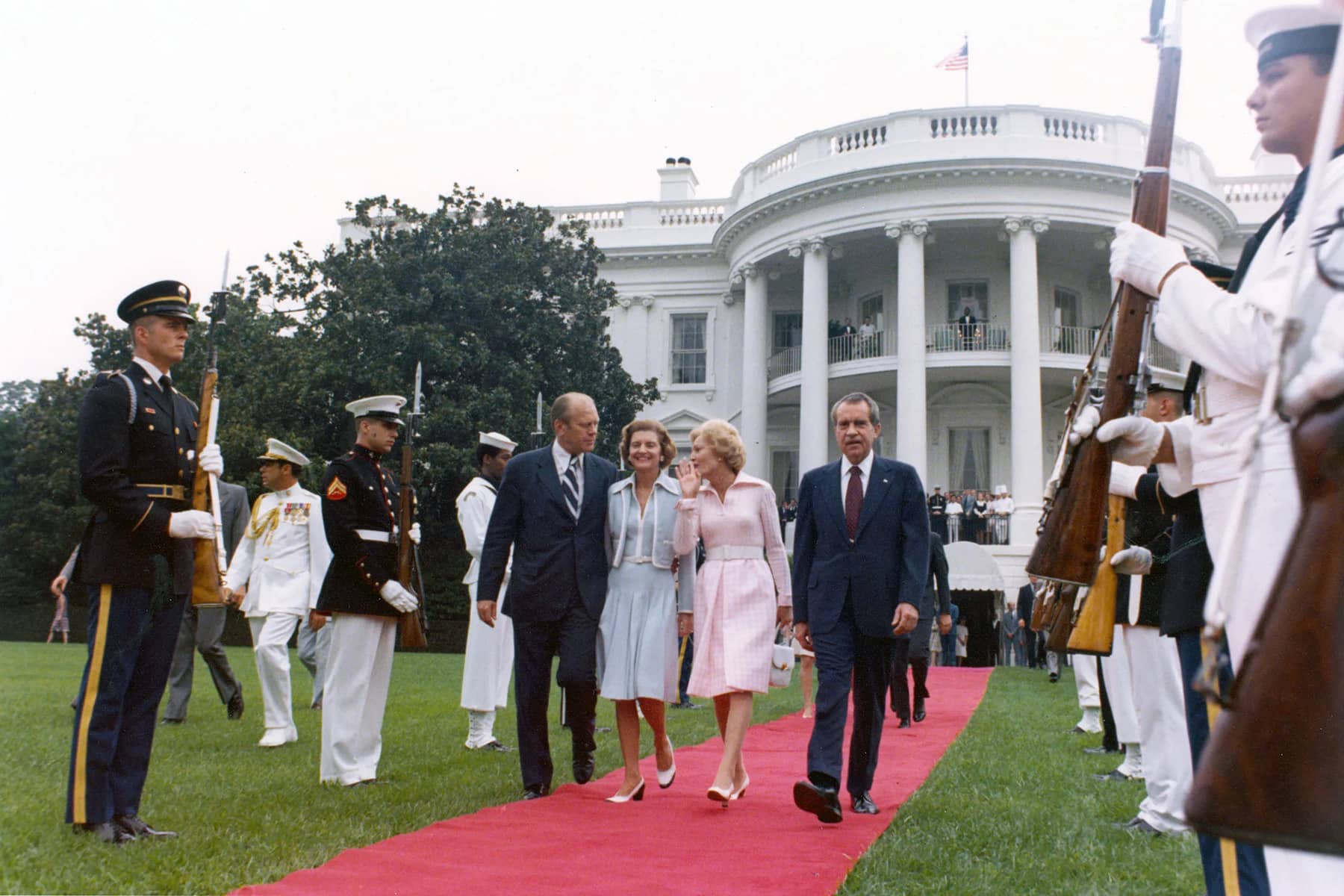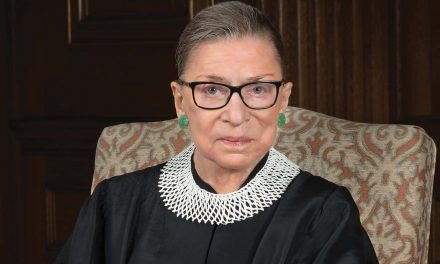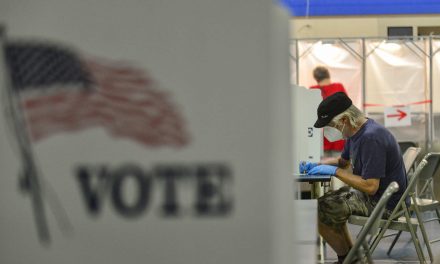
Early in the morning on June 17, 1972, Frank Wills, a 24-year-old security guard at the Watergate Office Building in Washington DC, noticed that a door lock had been taped open.
He ripped off the tape and closed the door, but when he went on the next round, he found the door taped open again. He called the police, who found five burglars in the Democratic National Committee headquarters located in the building. And so it began.
The U.S. president, Richard M. Nixon, was obsessed with the idea that opponents were trying to sink his campaign for reelection. The previous year, in June 1971, the New York Times had begun to publish what became known as the Pentagon Papers, a secret government study that detailed U.S. involvement in Vietnam from presidents Harry Truman to Lyndon Johnson.
While the study ended before the Nixon administration, it showed that presidents had lied to the American people, and Nixon worried that the story would hurt his administration by souring the public on his approach to the Vietnam War. Worse, if anyone leaked similar information about his own administration — and there was plenty to leak — it would destroy his reelection campaign.
To stop his enemies, Nixon put together in the White House a special investigations unit to stop leaks. And who stops leaks? Plumbers.
These operatives burglarized the office of the psychiatrist who worked with the man who had leaked the Pentagon Papers, Daniel Ellsberg, to find damaging information about him. They sabotaged opponents by “ratf*cking” them, as they called it, planting fake letters in newspapers, hiring vendors for Democratic rallies and then running out on the unpaid bills, planting spies in Democrats’ campaigns and, finally, wiretapping.
On June 17, 1972, they tried to tap the headquarters of the Democratic National Committee in Washington’s fashionable Watergate complex.
The White House denied all knowledge of what it called a “third-rate burglary attempt,” and most of the press took the denial at face value. But two young reporters for the Washington Post, Bob Woodward and Carl Bernstein, followed the sloppy money trail behind the burglars directly to the White House.
The fallout from the burglary gained no traction before the election, which Nixon and Vice President Spiro Agnew won with an astonishing 60.7 percent of the vote. They took 520 electoral votes — 49 states — while the Democratic nominees, South Dakota senator George McGovern and former Peace Corps director Sargent Shriver, won only 37.5% of the popular vote and the electoral votes of only Massachusetts and Washington DC.
But in March 1973, one of the burglars, James W. McCord, Jr., wrote a letter to Judge John Sirica before his sentencing, saying that he had lied at his trial, under pressure to protect government officials. McCord had been the head of security for the Committee for the Re-Election of the President, known as CREEP. Sirica was known for his stiff sentences — reporters called him “Maximum John” —a nd later said, “I had no intention of sitting on the bench like a nincompoop and watching the parade go by.”
Sirica made the letter public, and White House counsel John Dean promptly began cooperating with prosecutors. In April, three of Nixon’s top advisors resigned, and in May the president was forced to appoint Archibald Cox as a special prosecutor to investigate the affair.
That same month, the Select Committee on Presidential Campaign Activities, informally known as the Senate Watergate Committee, began nationally televised hearings. The committee’s chair was Sam Ervin (D-NC), a conservative Democrat who would not run for reelection in 1974 and thus was expected to be able to do the job without political grandstanding.
The hearings turned up the explosive testimony of John Dean, who said he had talked to Nixon about covering up the burglary more than 30 times, but there the investigation sat during the hot summer of 1973 as the committee churned through witnesses. And then, on July 13, 1973, deputy assistant to the president Alexander Butterfield revealed that conversations and phone calls in the Oval Office had been taped since 1971.
The fat was in the fire.
Nixon refused to provide copies of the tapes either to Cox or to the Senate committee. When Cox subpoenaed a number of the tapes, Nixon ordered Attorney General Elliot Richardson to fire him. In the October 20, 1973, “Saturday Night Massacre,” Richardson and his deputy, William Ruckleshaus, refused to execute Nixon’s order and resigned in protest; it was only the third man at the Justice Department — Solicitor General Robert Bork — who was willing to carry out the order firing Cox.
Popular outrage at the resignations and firing forced Nixon to ask Bork — now acting attorney general — to appoint a new special prosecutor, Leon Jaworski, a Democrat who had voted for Nixon, on November 1. On November 17, Nixon assured the American people that “I am not a crook.”
Like Cox before him, Jaworski was determined to hear the Oval Office tapes. He subpoenaed a number of them, and Nixon fought the subpoenas on the grounds of executive privilege. On July 24, 1974, in U.S. v. Nixon, the Supreme Court sided unanimously with the prosecutor, saying that executive privilege “must be considered in light of our historic commitment to the rule of law. This is nowhere more profoundly manifest than in our view that ‘the twofold aim (of criminal justice) is that guilt shall not escape or innocence suffer.’… The very integrity of the judicial system and public confidence in the system depend on full disclosure of all the facts….”
Their hand forced, Nixon’s people released transcripts of the tapes. They were damning, not just in content but also in style. Nixon had cultivated an image of himself as a clean family man, and the tapes revealed a mean-spirited, foul-mouthed bully. Aware that the tapes would damage his image, Nixon had his swearing redacted. “[Expletive deleted]” trended.
In late July 1974, the House Committee on the Judiciary passed articles of impeachment, charging the president with obstruction of justice, abuse of power, and contempt of Congress. Each article ended with the same statement: “In all of this, Richard M. Nixon has acted in a manner contrary to his trust as President and subversive of constitutional government, to the great prejudice of the cause of law and justice and to the manifest injury of the people of the United States. Wherefore Richard M. Nixon, by such conduct, warrants impeachment and trial, and removal from office.”
Still, Nixon insisted he was not guilty, saying he did not know his people were committing crimes on his watch. Then in early August a new tape, recorded days after the Watergate break-in, revealed Nixon and an aide plotting to invoke national security to protect the president. Even Republican senators, who had not wanted to convict their president, knew the game was over. A delegation went to the White House to deliver the news.
On August 9, 1974, Nixon became the first president in American history to resign.
Rather than admit guilt, though, he told the American people he had to step down because he no longer had the support he needed in Congress to advance the national interest. He blamed the press, whose “leaks and accusations and innuendo” had been designed to destroy him. His disappointed supporters embraced the idea that there was a “liberal” conspiracy, spearheaded by the press, to bring down any Republican president.
When his replacement, Gerald Ford, issued a preemptive blanket pardon for any crimes the former president might have committed against the United States, he guaranteed that Nixon would never have to account for his illegal attempt to undermine his Democratic opponent, and that those who thought like Nixon could come to think they were above the law.
“What I admire about Nixon was his resilience,” one of Nixon’s 1972 operatives told a reporter decades later, “It’s attack, attack, attack.” That operative, who sports a tattoo of Nixon on his back, was Roger Stone, who went on to advise Donald Trump’s political career.
The White House
Letters from an Аmerican is a daily email newsletter written by Heather Cox Richardson, about the history behind today’s politics














